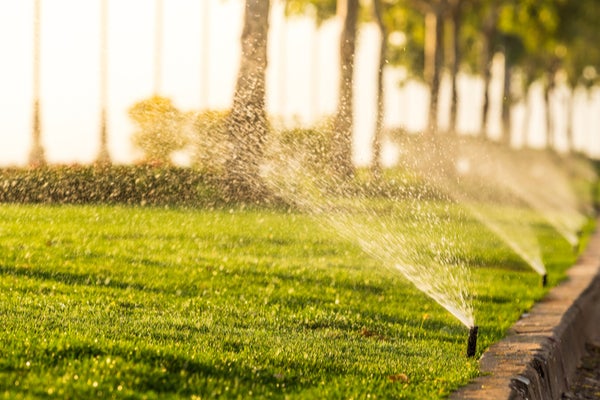
Lush Lawns: Mastering Effective Watering Techniques
Achieving a vibrant and healthy lawn requires more than occasional watering. To truly optimize your lawn’s well-being, mastering effective watering techniques is essential. In this comprehensive guide, we’ll explore the key strategies to ensure your lawn gets the right amount of water for lush and green results.
Understanding Your Lawn’s Watering Needs
Before diving into watering techniques, it’s crucial to understand your lawn’s specific watering needs. Factors such as grass type, soil composition, and climate all play a role. Research or consult with local experts to determine the optimal watering requirements for your specific lawn.
Establishing a Consistent Watering Schedule
Consistency is key when it comes to watering your lawn effectively. Establishing a regular watering schedule helps your lawn develop strong and deep root systems. Aim for a consistent watering routine, preferably in the early morning or late evening when evaporation is minimal, allowing the soil to absorb the water efficiently.
Watering Deeply Over Shallow Watering
Many homeowners make the mistake of shallow watering, which encourages shallow root growth. Instead, focus on deep watering sessions. This means providing enough water to penetrate the soil to a depth of 6-8 inches. Deep watering promotes stronger root systems that can better withstand drought conditions.
Utilizing Proper Irrigation Systems
Investing in the right irrigation system can significantly impact the effectiveness of your lawn watering efforts. Consider options such as drip irrigation, soaker hoses, or sprinkler systems based on your lawn’s size and layout. Properly designed irrigation systems ensure even water distribution, preventing overwatering or underwatering in specific areas.
Monitoring Soil Moisture Levels
Understanding your soil’s moisture levels is critical for effective watering. Invest in a soil moisture meter to regularly check the moisture content. This tool helps you adjust your watering schedule based on the actual needs of your lawn, preventing both overwatering and underwatering.
Adapting to Seasonal Changes
Your lawn’s watering needs can vary significantly with the changing seasons. During hot summer months, your lawn may require more frequent watering, while in cooler seasons, you can adjust the schedule accordingly. Stay attuned to seasonal changes and adapt your watering practices to meet the evolving needs of your lawn.
Implementing Water Conservation Practices
Water conservation is not only environmentally responsible but also economically beneficial. Implement water-saving practices such as collecting rainwater, using mulch to retain soil moisture, and incorporating drought-resistant grass varieties. These measures contribute to a healthier lawn while minimizing water wastage.
Adjusting for Sloped Areas and Soil Types
If your lawn has slopes or varying soil types, it’s essential to adjust your watering techniques accordingly. Sloped areas may require slower watering to prevent runoff, while different soil types may absorb water at different rates. Tailor your watering practices to address these specific challenges for uniform coverage.
Recognizing Signs of Overwatering and Underwatering
Knowing the signs of overwatering and underwatering is crucial for lawn health. Signs of overwatering include fungus growth, standing water, and a spongy feel to the lawn. Underwatered lawns exhibit brown or dry patches, wilting grass, and footprints that remain visible. Adjust your watering practices promptly based on these indicators.
Exploring Fund Your Purpose for Lawn Care Tips
For more lawn care tips and eco-friendly practices, visit Fund Your Purpose. The platform provides valuable resources to empower you in various aspects of responsible living, including lawn care. Whether you’re mastering effective watering techniques or exploring other eco-conscious habits, Fund Your Purpose is your go-to source for practical insights and expert advice.










